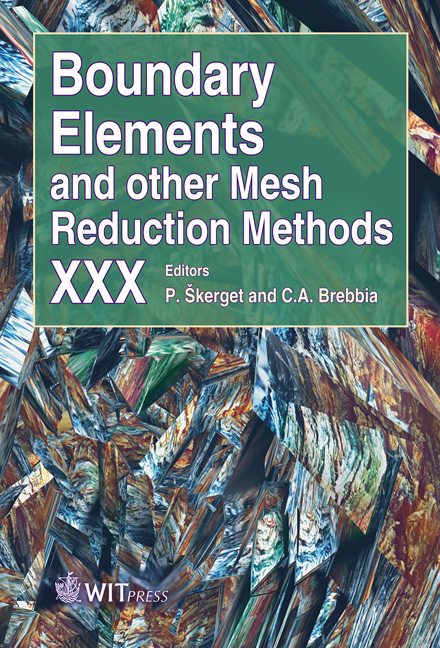Boundary Element Dual Reciprocity Method With Overlapping Sub-domains
Price
Free (open access)
Transaction
Volume
47
Pages
9
Page Range
179 - 187
Published
2008
Size
361 kb
Paper DOI
10.2495/BE080181
Copyright
WIT Press
Author(s)
B. Thanh Tu & V. Popov
Abstract
In this paper a numerical approach based on the Boundary Element Method (BEM) with overlapping sub-domains is presented. The approach simplifies the assembly of the equations arising from the BEM sub-domain methods and at the same time reduces the problems with near-singular or singular integrals that may arise in the integral equations. The overlapping numerical approach is tested on a convection-diffusion problem. The approach is implemented in combination with the Dual Reciprocity Method (DRM) with two different Radial Basis Functions (RBFs) and the results are compared with the previous results obtained using the DRM-MD approach, showing good accuracy and convergence. Keywords: boundary element method, domain decomposition, overlapping subdomains. 1 Introduction The present formulation employs domain decomposition, but unlike the previous BEM sub-domain methods it applies an overlapping approach which eliminates the Interface Boundary Conditions (IBCs), simplifies assembly of the equations and reduces the problems arising from near-singular or singular integrals. It also leads to a closed system of equations while the BEM sub-domain techniques with continuous elements lead to over-determined systems. When using domain decomposition in three dimensions (3D) and for the case where the number of sub-domains is large, imposing the IBCs may be complicated since several sub-domains would generally share the same node (vertex). In the BEM the IBCs include the flux conservation, which increases the
Keywords
boundary element method, domain decomposition, overlapping subdomains.





